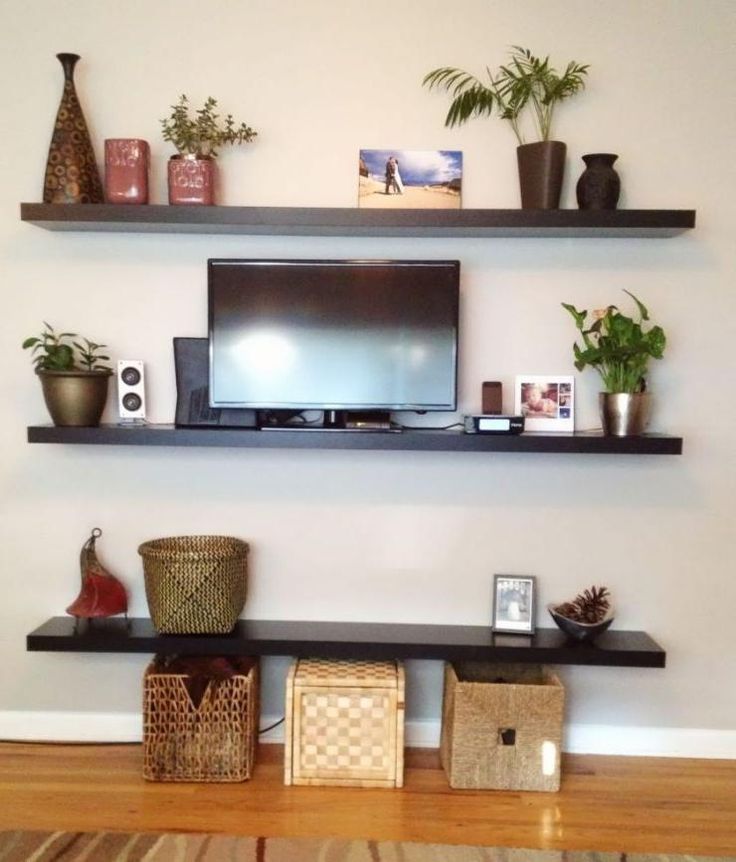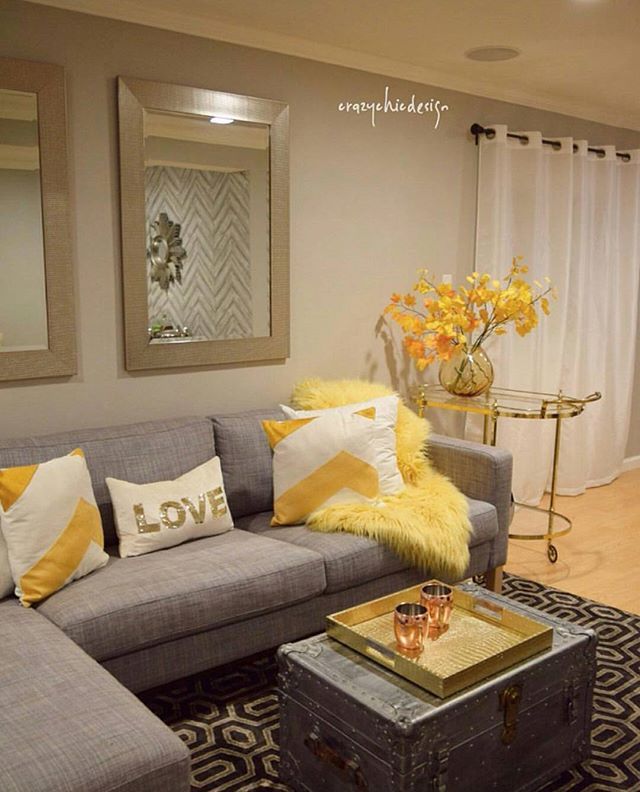Mediterranean style plants
the 10 best to grow in your backyard |
(Image credit: Miriam Heppell/Alamy)
Sun-loving Mediterranean plants are tough and drought-tolerant yet beautiful. The natural planting scheme combines a tapestry of different colors and textures using perennial plants that like to bake in the sun.
Colors tend to be from a muted palette of soft gray-greens and mauve-blues that creates a painterly effect, but bright splashes of color are welcome, too.
Mediterranean plants like a sunny south-facing position if they’re going to thrive and they do well in poor soil, with many happy even to settle their roots straight into gravel, which, of course, makes them the perfect complement to your Mediterranean garden ideas.
The mild winters and hot dry summers of the Mediterranean lends itself to drifts of hardy and low-growing plants that like these conditions including lavender, herbs, succulents and grasses. So if your garden faces south and you have mild winters, these Mediterranean plants will suit your space.
Mediterranean plants
The planting most commonly associated with Mediterranean garden design are naturalistic and wild, inspired by the landscape of Provence but also feature more formal schemes in the style of colorful Andalusian courtyards with terracotta pots filled with bright blooms.
Our pick of the best Mediterranean plants will suit whichever style of Mediterranean garden or flower bed ideas you end up choosing.
1. Nerium oleander (rose bay)
(Image credit: Hemjaa/GettyImages)
With clusters of pink, red or white flowers in summer on evergreen foliage, oleander is a highly prized ornamental shrub seen everywhere in the Mediterranean. It’s ideal in a container in a sunny spot on the patio, especially as some oleander shrubs are scented too for you to enjoy up close.
Height: 5 to 8ft (1.5 to 2.5m)
Spread: 3 to 5ft (1 to 1.5m)
2. Mediterranean spurge (Eurphorbia characias wulfenii)
(Image credit: Seven75/GettyImages)
Showy architectural perennial with spires of frothy lime green-yellow flowers that thrives in any gravel garden or sunny border where poor soil is not a problem.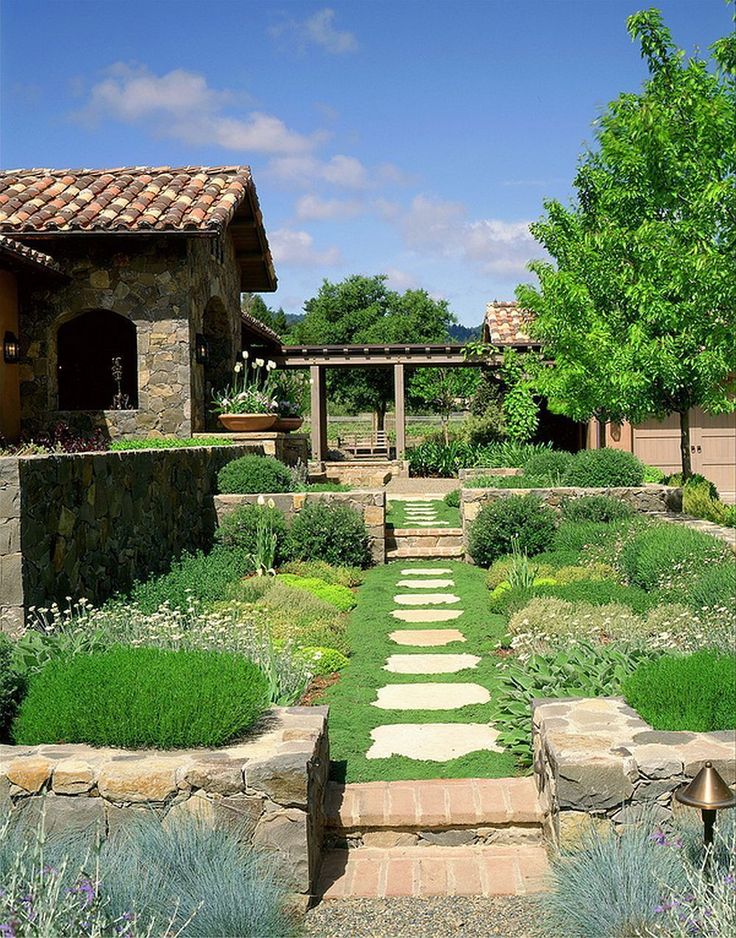 It loves baking in a sun-drenched spot where it will happily spread around to fill the space
It loves baking in a sun-drenched spot where it will happily spread around to fill the space
Height: 2ft 9in (90cm)
Spread: 2ft 9in (90cm)
3. Geranium palmatum (Canary Island geranium)
(Image credit: Perlaroques/GettyImages)
The large magenta flowers of this pretty evergreen perennial bloom reliably from June to September and are a showy addition to the summer garden. The foliage is flushed with red in winter, too, for an ornamental addition to the garden. It thrives in milder regions and sheltered spots.
Height: 3 to 5ft (1 to 1.5m)
Spread: 1 to 3ft (0.5 to 1m).
4. Echium pininana (bugloss)
(Image credit: Antonio Siwiak/Alamy Stock Photo)
This is a true sun lover with its preferred location one of baking heat in a southern climate. It has giant ornamental spikes of either rose-pink, purple-blue or white flowers that bees and butterflies love. Once the flowers have faded, shake the seeds around the garden to get more plants.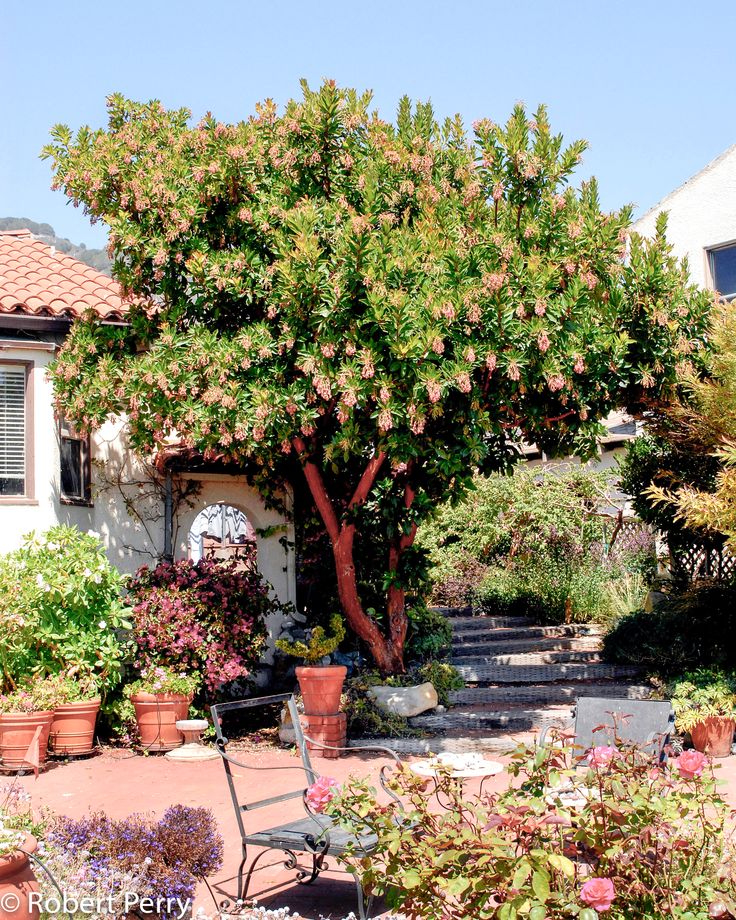
Height: 5ft 9in (1.8m)
Spread: 2ft 9in (90cm)
5. Agapanthus
(Image credit: Irina Polonina/GettyImages)
If you love Mediterranean blues you’ll love exotic agapanthus, which come in every shade from pale powder blue to dark inky midnight hues. They need full sun and well-drained soil. Grow them in tall pots and overwinter under cover or protect crowns from frost in the garden.
Height: 1 to 3ft (30 to 90cm)
Spread: 1ft (30cm)
6. Santolina neapolitana
(Image credit: SIAATH/GettyImages)
Also known by the charming name of rosemary-leaved lavender cotton, this aromatic dwarf evergreen shrub with feathery foliage is covered with cool lemon button-shaped flowers all summer long. It’s easy to grow in containers, gravel gardens and borders.
Height: 4 to 19in (10 to 50cm)
Spread: 19 to 38in (50 to 100cm)
7. Echinops 'Veitch's Blue' (globe thistle)
(Image credit: Natalija Juric/GettyImages)
A favorite with bees and butterflies, this architecturally striking plant works best in a gravel garden or sunny border among other Mediterranean plants that also love parched conditions.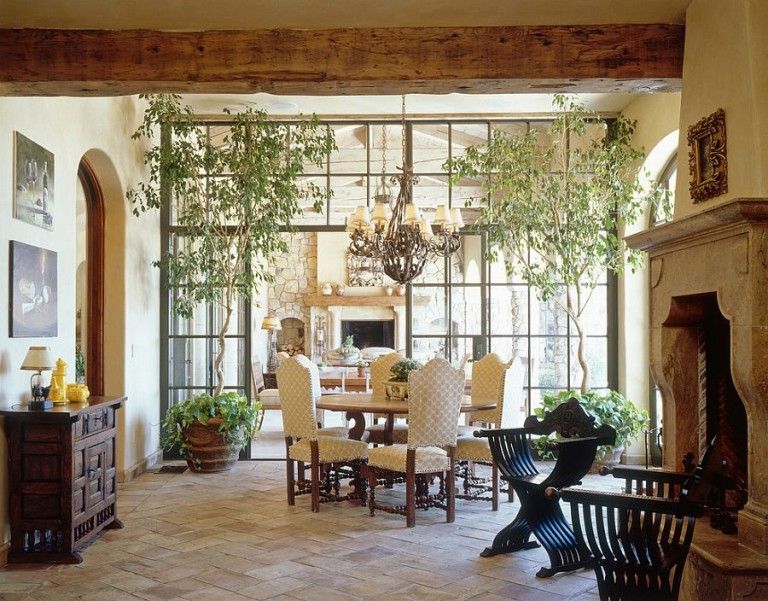 It has globes of dark blue flowers in summer and the spiny gray leaves add interest, too.
It has globes of dark blue flowers in summer and the spiny gray leaves add interest, too.
Height: 3ft (90cm)
Spread: 18in (45cm)
8. Achillea ‘Taygetea’ (yarrow)
(Image credit: Martin Hughes Jones/Alamy Stock Photo)
Clusters of large, pale lemon flat flowerheads appear on gently branching stems above grayish-green leaves in summer and autumn. These long-flowering perennials are the star of natural planting schemes, a magnet for attracting butterflies and attracting bees, and love a hot dry spot in the yard.
Height: 24in (60cm)
Spread: 18in (45cm)
9. Cotinus coggygria (smoke bush)
(Image credit: Olena Lialina/GettyImages)
The feathery panicles of this easy-to-grow shrub add a hazy veil of color to summer borders as well as spectacular fiery shades in fall when the leaves turn sunset yellow, orange and red. The poorer the soil, the more this will thrive.
Height: 13 to 26ft (4 to 8m)
Spread: 13 to 26ft (4 to 8m)
10.
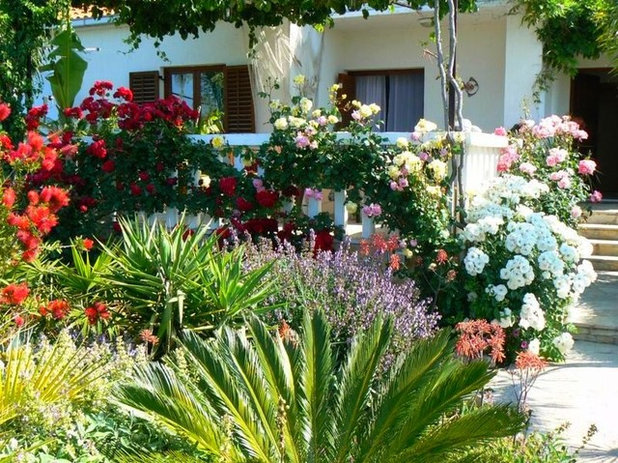 Phlomis tuberosa ‘Amazone’ (Jerusalem Sage)
Phlomis tuberosa ‘Amazone’ (Jerusalem Sage)(Image credit: Nick Kurzenko/GettyImages)
The tall, dark upright stems of this robust perennial bear many lilac-pink flowers that look like frilled chandeliers. Once the flowers fade, phlomis retains a dramatic presence in the border with its architectural seed heads that look striking among late-flowering perennials and grasses.
Height: 4ft (1.2m)
Spread: 3ft (90cm)
What plants grow in a Mediterranean garden?
Plant that grow in a Mediterranean garden include lavender, rosemary and other herbs including mint, chives and parsley, shrubs like oleander, lantana, jasmine and plumbago, climbers including bougainvillea, passion flower and Solanum jasminoides, cacti and succulents, salvia, artemisia, catmint and blue fescue.
‘Don’t forget to consider trees for a Mediterranean garden,’ says Lucy Searle, global editor in chief of Homes & Gardens. ‘You could plant cypress trees, palms, or citrus trees as well as beautiful olive trees.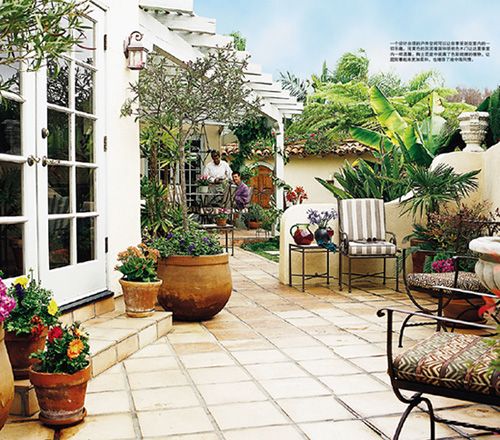 ’
’
What soil do Mediterranean plants like?
Mediterranean plants like very well-drained soil that isn’t too heavy – and you may need to improve drainage before planting them. Wet and waterlogged soil will not see them thrive. Many will tolerate drought conditions, but do check as some benefit from moisture-retentive soil during summer.
‘If you’re including gardenias and camellias, bear in mind that these need acidic soil,’ says Lucy Searle, global editor in chief of Homes & Gardens.
Lifestyle journalist Sarah Wilson has been writing about gardens since 2015. She's written for Gardeningetc.com, Livingetc, Homes & Gardens, Easy Gardens and Modern Gardens magazines. Her first job on glossy magazines was at Elle, during which time a visit to the legendary La Colombe d'Or in St-Paul-de-Vence led to an interest in all things gardening. Later as lifestyle editor at Country Homes & Interiors magazine the real pull was the run of captivating country gardens that were featured.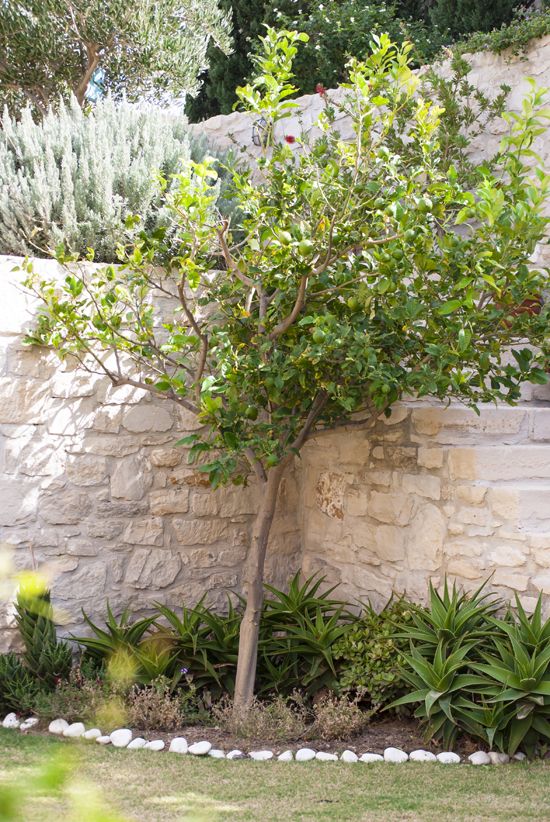
How to create a Mediterranean garden: design inspiration
(Image credit: Abigail Rex)
Recreating the feel of a Mediterranean garden is easier than you might imagine. Plus, with predictions of continuing hot, dry summers, making our gardens more resistant to drought is increasingly important.
A Mediterranean garden brims with low maintenance, fragrant and architectural plants; gravel and paving takes the places of time-consuming lawns, and seating areas and potted plants abound, so incorporate some or all of these elements into your Mediterranean garden ideas to recreate the feel of sunnier climes.
The planting palette for a mediterranean garden
(Image credit: Future / Polly Eltes)
'Herbaceous plantings in dry Mediterranean landscapes are risky; the more herbaceous planting there is, the more hay there will be in the all important summer months. While that spring flush is a real joy, the garden must hang on through the drier months of the year,' explains award winning garden designer James Basson of Scape Design .
'Evergreen shrubs form the bulk of our plantings i a Mediterranean garden; they are the most reliable for interest. Shrubs may stop flowering but they hang around all summer and show a variety of texture and form. Plants like Pistacia lentiscus or Juniperus phoenicea are really important so that the structure is very long lived,' James adds.
Mediterranean garden plants to include
(Image credit: Future / Annaick Guitteny)
Evoking the feel of a Mediterranean garden involves experimenting with an array of different plants.
You needn’t live in Italy or Spain to incorporate herbs, shrubs and flowers from such countries into your flower bed ideas – you can recreate the feel in a sheltered spot in a border or on the patio.
Many drought tolerant Mediterranean plants are those you'll have on a list for planning a dry garden.
'Mediterranean plants are often short lived, and without a careful eye will die out and fade away. The practice in a Mediterranean garden is to prune, to extend the structural quality of the plants when they grow too fast and to selectively weed out plants that we do not want, to leave plants to self-seed where we want them. The longevity of the vegetation is a real part of the selection process,' explains James Basson.
The longevity of the vegetation is a real part of the selection process,' explains James Basson.
In late winter in a Mediterranean garden you’ll often see acacias and citrus trees in their full glory; in spring crocuses, ornamental grasses, annuals and cistus take centre stage, and into the summer it’s bougainvilleas, pelargoniums, scented herbs, oleander and olive trees that we’re most familiar with. Then, in fall, there’s a smaller burst of beauty with the likes of cyclamen and fall crocuses, with rosemary often flowering the year round, and architectural palms adding height and Riviera glamor.
(Image credit: Future / Annaick Guitteny)
Classic plant choices for a Mediterranean garden include:
- Olive trees
- Citrus plants
- Agave
- Agapanthus
- Lavender
- Rosemary
- Herbs
- Pelargoniums
- Bougainvillea
- Palms
- Cypress
- Yuccas
'Ornamental grasses are useful as they create the glue that can help blend the herbaceous and the shrubby plantings. Good summer structure grasses, such as Hyparrhenia hirta, will give year round interest even once they have gone over to dormancy in the summer months,' says James Basson.
Good summer structure grasses, such as Hyparrhenia hirta, will give year round interest even once they have gone over to dormancy in the summer months,' says James Basson.
How to plant in a Mediterranean garden
(Image credit: Leigh Clapp)
Spring is an ideal time for planting a Mediterranean garden, when the soil has warmed up a little, and to avoid the root rot after wet, cold winters.
Select the right plant for the right place, considering both soil and aspect. The closest you can mimic a plant's native growing conditions the more chance it will thrive with little maintenance required.
'Mediterranean plants have evolved to enjoy long, sunny days, where excellent light quality is key, so avoid planting in the shade of large trees,' advises Peter Jones, garden manager at RHS Wisley .
Peter offers the following tips for planting:
- Mediterranean garden plants prefer free-draining ground, so don't plant them on a site that is waterlogged in winter
- Consider how frost sits in your garden
- A south-facing site that enjoys sun all day, protected from the elements, is ideal
- Mediterranean plants generally prefer nutrient-poor soil, so avoid feeding the soil
- Prune and clip rosemary, lavender and cistus after flowering to avoid them becoming woody and leggy
Many drought tolerant plants will form communities of plants and a key to this style is repeating planting of just a few choices, rather than lots of variety.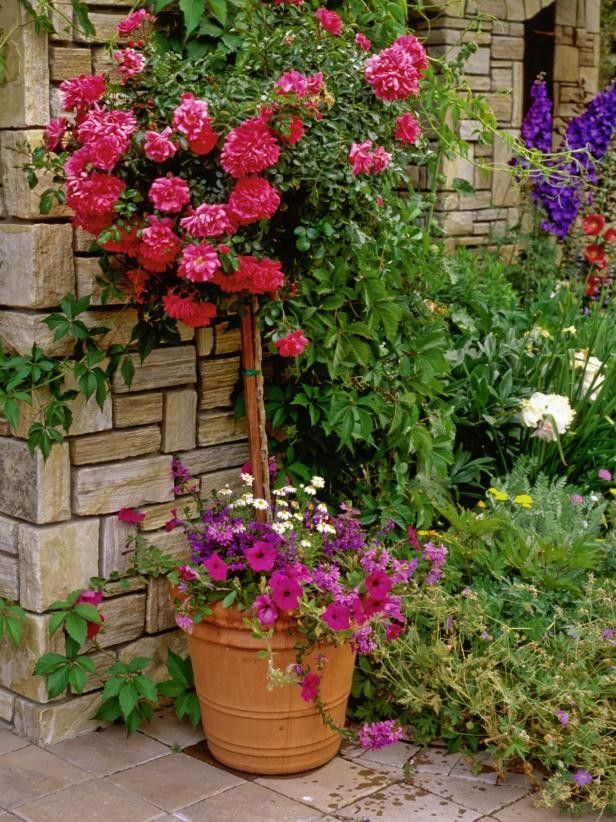
(Image credit: Future / Mark Bolton)
A sunny slope is ideal for creating a Mediterranean garden style as the drought tolerant plants prefer free-draining soil, but any sunny area will work well, with a gravel mulch to keep the crowns dry and to provide an appropriate background.
Consider evoking romantic, windswept sand dunes by weaving a wooden boardwalk through your Mediterranean garden. Take inspiration from rock garden ideas and edge with rugged rocks and gravel to reflect the coastline. Plant ornamental grasses and shrubs that mimic the wild scrubland found in arid areas.
Make the most of dry soil conditions by planting a combination of Stipa gigantea (golden oats), Santolina chamaecyparissus (cotton lavender), nepeta (catmint), salvia and small hebes.
Landscaping a Mediterranean garden
(Image credit: Miriam Heppell/Alamy)
When designing a Mediterranean garden, 'we are keen to work with the natural conditions that make up the surrounding landscape, which we feel helps link our gardens to their sense of place,' explains James Basson of Scape Design.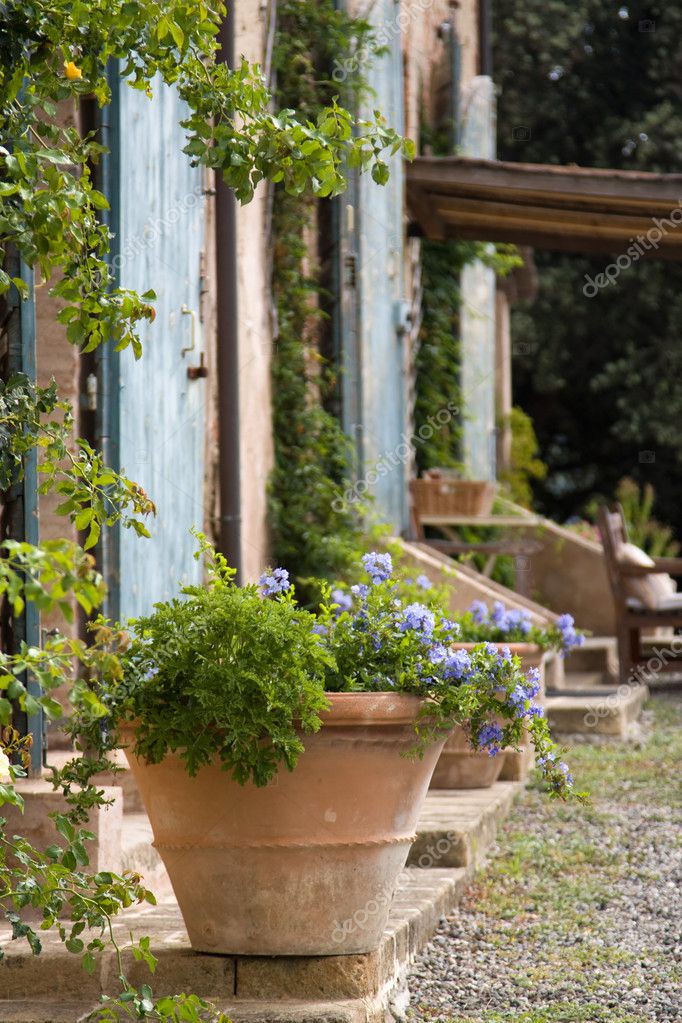
'The natural landscape of the Mediterranean is mineral; there is a lot of stone. The presence of stone for us breathes space throughout our plantings. It is the pause, the silence between the notes. The irrigated lawn has no place in the Mediterranean, so it is stone, sand, gravel that creates this breath. We use gravel to help manage the competition for space by the plants,' he adds.
Gravel and warm-toned paving are typical of Mediterranean garden style, with terraces created for outdoor dining.
To avoid plants self-seeding in a gravel garden, place landscape fabric over the soil and cut crosses to insert the plants, then add a layer of gravel between. Choose a gravel color to complement that other elements and materials of hard landscaping in the garden.
For a small garden idea this is a practical option, dispensing with high maintenance lawns and instead using gravel or paving as the basis for the design, softened with ground cover and an assortment of containers.
Create relaxed, informal spaces, surrounded by textural, fragrant planting and rustic detailing. It takes some planning to create this weathered atmosphere, with structure and planting working together.
(Image credit: Future / Nicolas Saphieha)
Terraced levels with stone walls, natural stone paving and limewashed walls are also common, or inject some color and pattern with mosaic details in walls, step risers or patios.
'The dry stone wall speaks of the landscape, it is the product of the material to hand. It is without doubt a significant part of the budget for any Mediterranean garden but it is worth doing properly. These walls breathe life into a garden creating level changes and shaping the space,' explains James Basson.
Creating shade in a Mediterranean garden
(Image credit: Future / David Cleveland)
The Mediterranean climate is defined by the summer sun so structures in the garden that offer shade are crucial.
'Pergola ideas and places in the shade are an important part of the Mediterranean garden, without which there is no respite from the intense bright light and heat,' explains James Basson.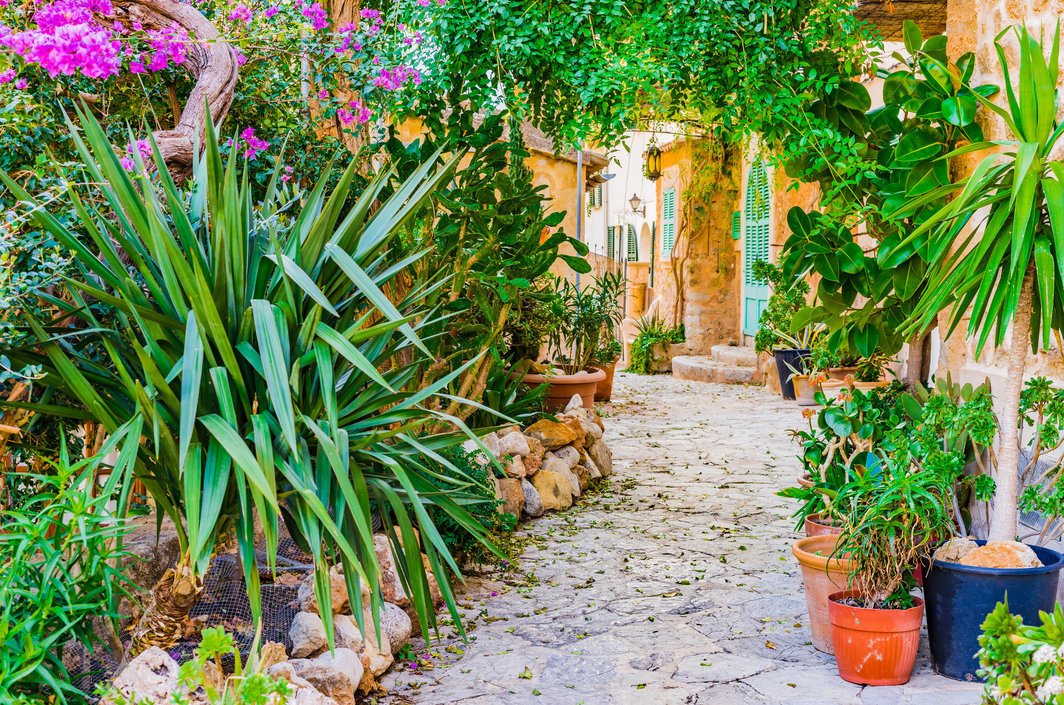
'Reed or ‘split cane’ covers, and vegetation perform best in this climate as they create shade but allow for the air to circulate,' he adds.
Flowering climbers or evergreen climbers can be trained to scramble over a pergola or arbour to add both shade, scent and beautiful blooms to enjoy.
Water features in a Mediterranean garden
(Image credit: Mark Bolton)
Many Mediterranean gardens include pool ideas.
'Water in the garden gives real value to the quality of space, we feel soothed, and without the presence of water we are soon baked by the summer heat. Pools are in themselves very alien environments to the landscape, so we try to include them by using natural materials and colors,' says James Basson.
Also consider the inclusion of other water features to add a soothing, cooling and calming element. 'Even in the driest of landscapes water emerges, typically at the base of walls at the end of slopes. We are drawn to water and so we incorporate water into Mediterranean gardens to help bring energy and life to areas.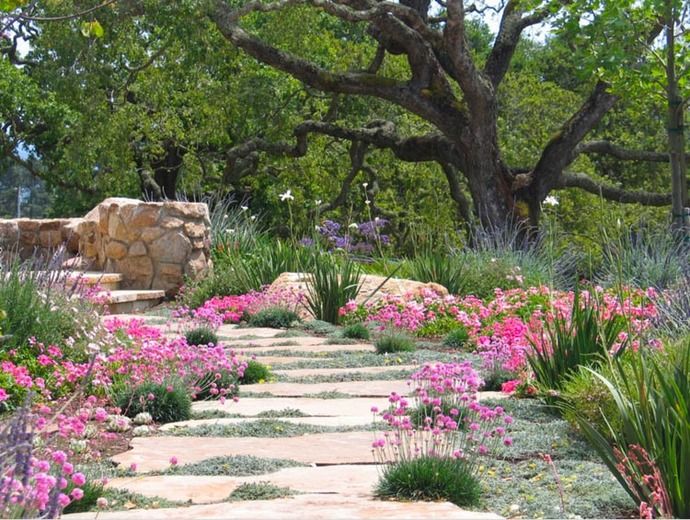 The water features that we create often have a brimming quality – this also helps create a general sense of abundance,' says James.
The water features that we create often have a brimming quality – this also helps create a general sense of abundance,' says James.
Using pots in a Mediterranean garden
A lemon tree in a pot in the gardens of the summer residence of Elena Piletra. Villa near Lucca in Tuscany, Italy
(Image credit: Future / Mark Bolton)
Terracotta pots filled with zingy, vibrant flowers, citrus trees or architectural palms or yucca plants are hallmarks of a Mediterranean garden.
Include containers in various sizes, smaller pots for lining walls and displaying in groups, and large, oversized containers to make a statement as part of your courtyard ideas.
Ensure any containers have good drainage and fill the bottom of the pots with crocs or stones before adding the compost to aid drainage.
Position the pots in a sunny, sheltered area of the garden, and water only when the compost feels dry. The tender plants can then be moved indoors for winter if you live in cooler climates.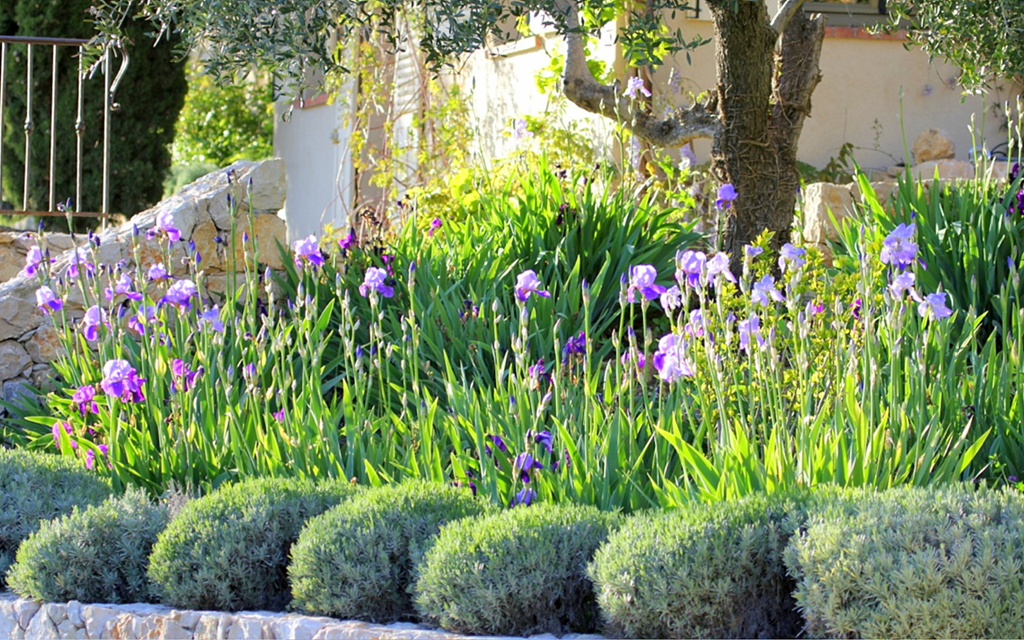
(Image credit: Leigh Clapp)
What is a Mediterranean garden style?
Mediterranean garden style refers to the garden features of countries that surround the Mediterranean sea – such as Spain, France, Greece and Italy. Some plants that are grown in the Mediterranean are genuine Med natives, while others are from similar climates in California, South Africa or South America, but all are adapted to the Mediterranean climate.
(Image credit: Leigh Clapp)
In the wild Mediterranean, plants enjoy damp and relatively mild winters followed by dry, sunny summers. Many grow through the winter, flower in the spring, set seed then take a break.
In a Mediterranean garden, most plants enjoy sunshine and good drainage and, although they need winter moisture, they hate winter sogginess. Many, especially bulbs, appreciate dry – even parched – summer soil.
What plants grow in a Mediterranean garden?
There are many options for plants that grow in a Mediterranean garden.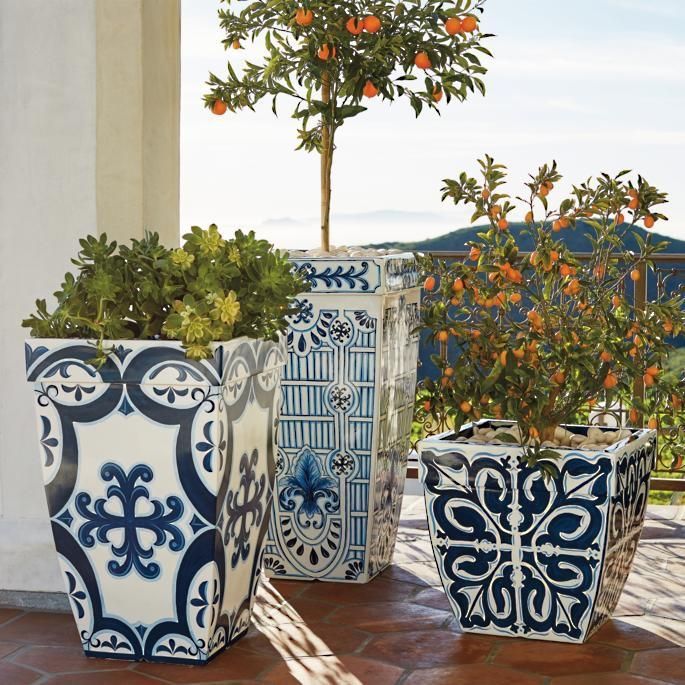 Many of the plants you see in these summer hot spots will grow quite happily anywhere if given a sunny, sheltered spot and soil with good drainage.
Many of the plants you see in these summer hot spots will grow quite happily anywhere if given a sunny, sheltered spot and soil with good drainage.
And as climate change starts to have an impact on gardens, more and more areas already have similar growing conditions – low rainfall, summer sunshine and dry winters – to those in the Med, making plants native to this area ideal for a hosepipe-free plot.
(Image credit: Future / Simon Scarboro)
A few simple terracotta pots – the classic choice for Mediterranean garden containers – planted with colorful pelargoniums and freshly-leaved succulents will recreate the spirit of a Greek balcony.
Or you could transform a sun-baked seating area into an Italian-inspired terrace, surrounding it with herbs like oregano, thyme and bay. Add a pergola, then plant scented climbers or grow a vine – the leafy canopy will also provide welcome dappled shade.
How do I make my garden Mediterranean?
Creating a Mediterranean garden is easier than you might think.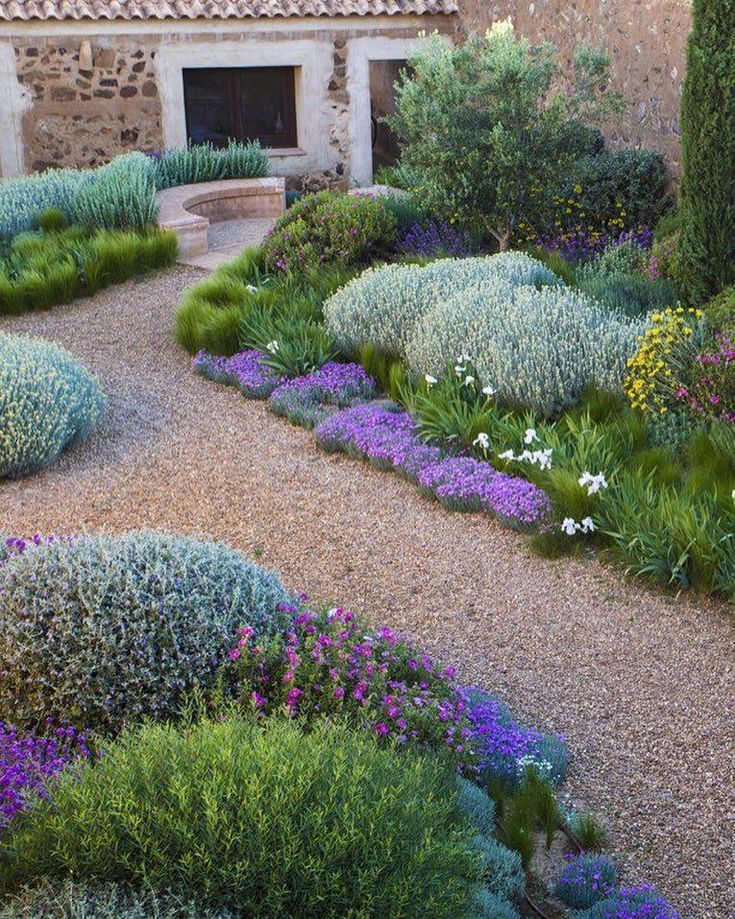 If you have room to spare and a mild location with free-draining soil, you could easily mimic the style.
If you have room to spare and a mild location with free-draining soil, you could easily mimic the style.
Use a tree, such as an olive or a hardy palm as a focal point, then add shrubs and perennials, such as the Portuguese laurel, euphorbias and genista. Plant fragrant flowers like jasmine and lavender – as their perfumes are released, they’ll conjure up happy memories of sun-baked escapes.
(Image credit: Future / Simon Scarboro)
Mediterranean winters tend to be cold and dry, so native plants can be surprisingly hardy. But when prolonged cold is combined with wet, they will suffer. If your soil isn’t naturally free-draining, be sure to dig in plenty of grit; alternatively, consider building some raised beds to improve drainage.
Growing these plants in containers is another option, particularly if you have heavy clay soil, or live somewhere with high rainfall. Pots also have the bonus of being easily moved under cover in fall.
Whether you simply want to add a touch of the Med or embrace its planting wholeheartedly, Mediterranean garden ideas are surprisingly easy to create.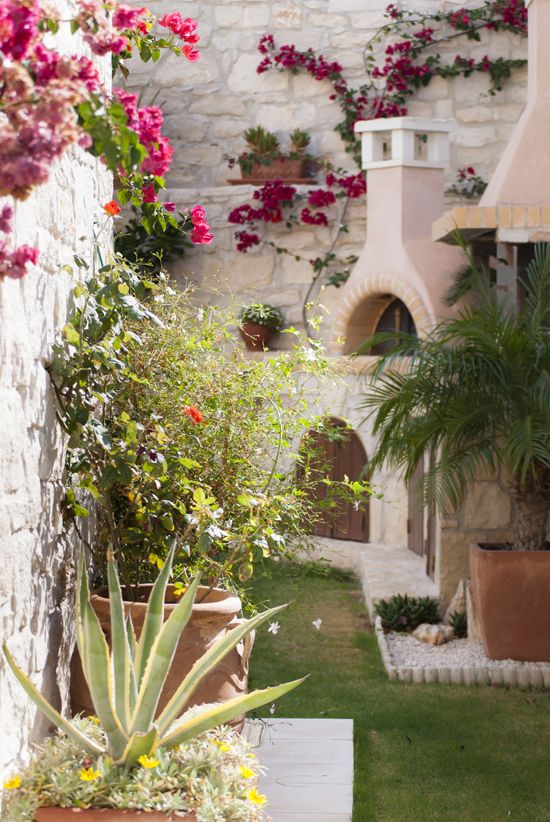
Jennifer is the Digital Editor at Homes & Gardens. Having worked in the interiors industry for a number of years, spanning many publications, she now hones her digital prowess on the 'best interiors website' in the world. Multi-skilled, Jennifer has worked in PR and marketing, and the occasional dabble in the social media, commercial and e-commerce space. Over the years, she has written about every area of the home, from compiling design houses from some of the best interior designers in the world to sourcing celebrity homes, reviewing appliances and even the odd news story or two.
Mediterranean style garden: 20 examples for inspiration!
A Mediterranean style garden can be described as sunny, warm, bright, fragrant, natural and comfortable.
Definitely, such a garden is created for enjoying life, relaxation and pleasure. Since the Mediterranean style arose in a hot climate, it is natural that in such gardens there are many places with shading, cozy patios, pools and terraces, flower beds with herbs and climbing plants.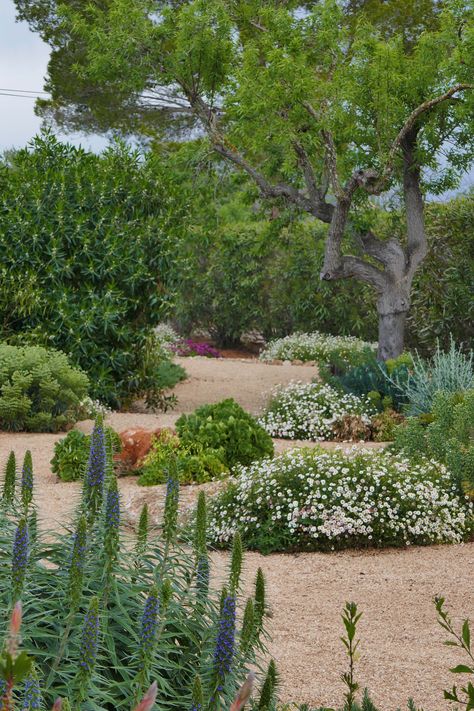
The Mediterranean is quite a vast region, so gardens of this style often differ from each other.
If you have long dreamed of such a fragrant corner. And we would like to learn more about what such gardens are like, what kind of plants are grown there, and what methods designers achieve similarities with the natural zone of the Mediterranean, then we tried not in vain. Come on in, it's going to be interesting!
Italian garden
For example, gardens in Italy have a classic look and are based on a strict layout. It uses clear geometric shapes, symmetry, straight paths and regular-shaped ponds.
The garden is divided into different areas, which are separated from each other by hedges or rectangular pergolas with climbing roses, clematis, tekoma and other climbing plants.
Italian gardens are usually located on a complex terrain of hills, on terraces, have retaining walls and paths made of natural stone. Various decorative elements are also made of stone: fountains, fences, grottoes, stairs, benches and balustrades.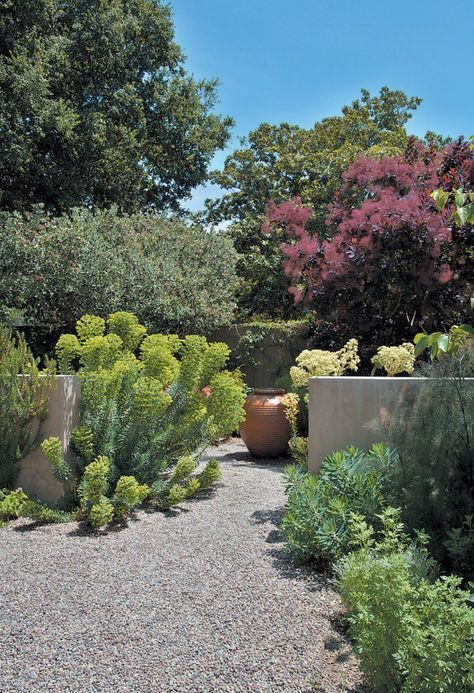
Mediterranean gardens often feature columns, stone flower containers or antique amphorae, some surfaces are decorated with bas-reliefs and sculptures. Here you can find evergreen boxwoods and arborvitae in the form of spirals or balls. Topiary art is characteristic of many classical gardens.
Provence mediterranean garden
French mediterranean gardens have a free design, characteristic of Provence and country styles. There are no clear lines here, the plants are arranged naturally, and a delightful aroma of lavender and herbs spreads over the garden.
Lavender is everywhere in this garden: in containers and flower beds, along the paths and instead of the lawn, as well as a wonderful companion for roses and other plants.
Garden furniture, most often elegant wrought iron: screens for climbing plants, bridges, fences, chairs and benches with soft cushions.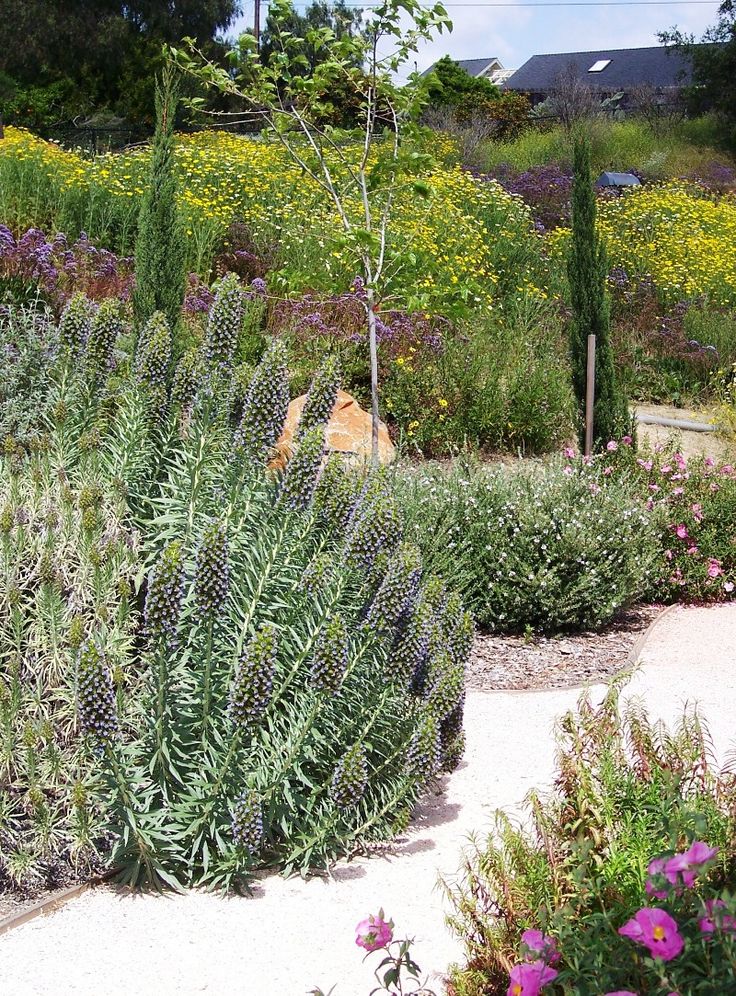 Guess what kind of embroideries adorn these pillows? Of course, these are images of lavender and roosters, which are also symbols of Provence.
Guess what kind of embroideries adorn these pillows? Of course, these are images of lavender and roosters, which are also symbols of Provence.
Greek style garden
To convey the atmosphere of Greece, use azure, dazzling white, olive, terracotta colors in the design of the garden. If there is a need to update garden buildings or furniture, feel free to use paints of these shades.
Residents of Greece spend a lot of time outdoors: socialize, dine, relax. Therefore, they equip their garden accordingly: there are many cozy seating areas located on terraces, patios are often covered from the sun with pergolas and awnings, and a large dining table and chairs are always present in the set of garden furniture.
The Mediterranean style of such a garden will be emphasized by wicker furniture made of rattan, bamboo or wicker.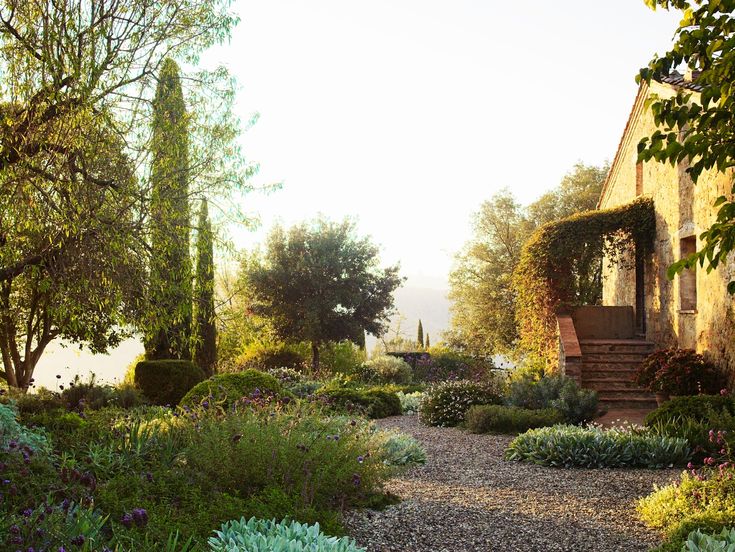
Decorate the windows of summer buildings in the garden with light, light curtains or blinds, they will protect from the sun at noon.
Conifers (arborvitae, junipers, boxwoods) can become the basis of your garden. Against the background of conifers, the rest of the flowers and plants of bright colors and shapes look great.
If some of the conifers in your climate do not winter outdoors, use container plants. This will allow them to be preserved in the winter, and container plants can also be rearranged at will and quickly change the look of the garden.
Herbs will complete the decoration:
- onion
- garlic
- pepper
- sorrel
- saffron
- coriander
- celery
- lettuce
- lovage
- basil
They can be planted in flowerbeds, flowerpots, hanging pots, and even gathered in bunches and hung to dry on windows or buildings.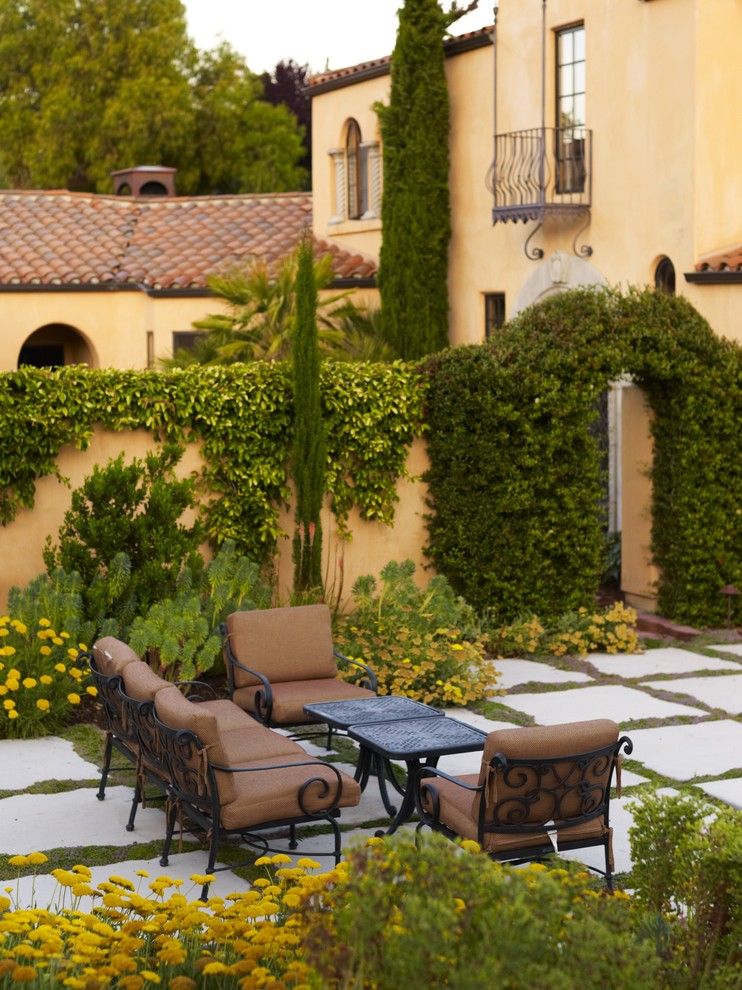
Flowers and plants
Mediterranean plants immediately create an incredible atmosphere of the south and fill the air with the aromas of lavender, fragrant herbs and pine needles. We select flowers and plants for our garden:
Conifers - thuja Smaragd, cypress, boxwood, juniper virgin and rocky. Various topiary forms of conifers (ball, spiral, cone).
Container plants - lemon, orange, fig, olive, pomegranate, oleander, laurel, palm. In our gardens, these plants do not overwinter in the open field, but they are often used as containers.
Creepers - climbing roses, wisteria, clematis, tekoma (kampsis), parthenocissus, several varieties of honeysuckle, bougainvillea. You can't do without these plants, creating shady areas in the garden. The tekoma (kampsis) is noteworthy - this vine is very powerful, its lashes reach several meters in length and are able to hide any large surface or structure. Its bright orange and yellow bell flowers are unforgettable.
Its bright orange and yellow bell flowers are unforgettable.
Ornamental shrubs - barberry (common, Thunberga), holly mahonia, spirea, forsythia, weigela, David's budley.
Flowers and herbs - roses, cannes, lavender, spring bulbs (narcissus, hyacinth, crocus), greyish-blue carnation, cyclamen, fescue, sapling, maritime cineraria, woolly chiste, sage, lupine, delphinium.
Herbs - a special element of the Mediterranean garden - basil, thyme, lavender, hyssop, oregano, thyme, marjoram, sage, rosemary.
The most popular plants in a Mediterranean garden will always be palms, pistachio, olive and citrus trees.
Garden decor
Notable Mediterranean garden decor:
- stone and rattan furniture
- wrought iron benches with cushions
- ceramic flowerpots
- antique statues
- sundial
- pool, stream, fountain
- pergola
- walkways and trim in stone, marble and pebbles
- colored mosaic, colored glass
- wicker and metal fruit baskets
Mediterranean garden plants
A large amount of vegetation (preferably from the Mediterranean region) will bring a sense of abundance to a lush garden and thereby create the right mood.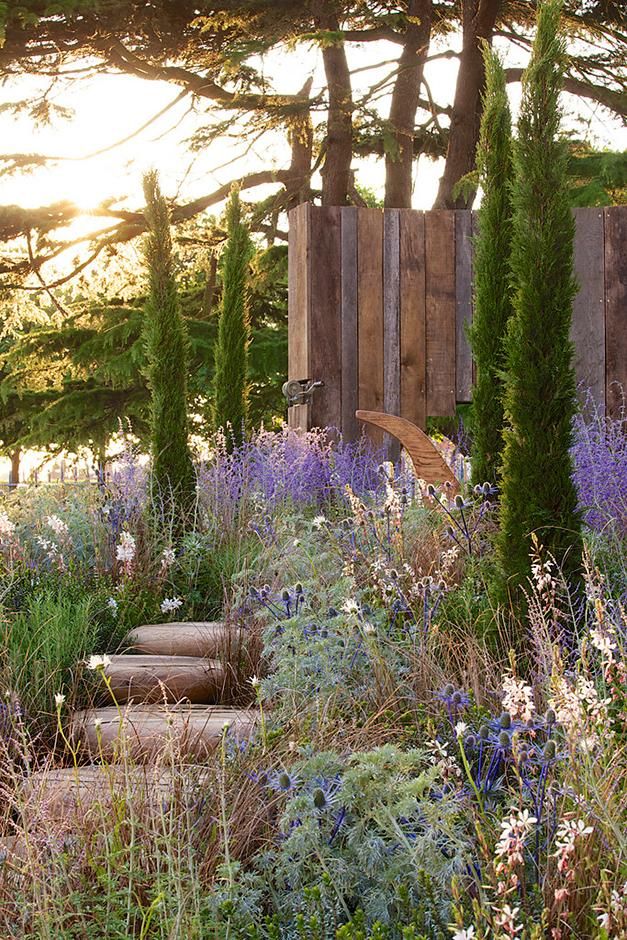
- Such plants do not hibernate here, so if you want to emphasize the southern mood, take tubs with plants wintering in room conditions into the garden for the summer: oleander (Nerium) with white, pink, purple flowers, standard form of laurel (Laurus), any citrus fruits, pomegranate (Punica), figs (Ficus carica), turmeric (Curcuma).
- If you have a winter garden, then there will be no problems with plants at all. Low positive temperatures will provide your "southerners" with an excellent wintering.
- Bougainvillea (Bougainvillea) is an indispensable plant in Mediterranean gardens. She entwined walls, fences, trees. This evergreen shrub with creeping shoots and sparsely spaced thorns, reaches 5 m, blooms with magnificent purple flowers. Oddly enough, in our country it is quite possible to grow it as a houseplant, taking it out into the garden for the summer.
- You can do without southern plants, and find a replacement among stylistically similar plants of central Russia.
 Many varieties of climbing roses are ideal for decorating walls and pergolas on the southern slope, for example, the bright red Flammentanz ("Flammentanz"). Will support the style of gray rose (Rosa glauca), barberries (Berberis).
Many varieties of climbing roses are ideal for decorating walls and pergolas on the southern slope, for example, the bright red Flammentanz ("Flammentanz"). Will support the style of gray rose (Rosa glauca), barberries (Berberis). - The special atmosphere of the garden is created by trees, under whose crown they escape from the heat in the south. We replace the typical Mediterranean olive with sea buckthorn (Hippophae) or silver sucker (Elaeagnus argentea), which have similar narrow silvery leaves.
- Bush cherries (Cerasus fruticosa), steppe almonds (Amygdalus nana), white locust (Robinia pseudoacacia) are suitable for these roles.
- Instead of cypresses, we plant varieties of arborvitae and spruces with a slender habit, junipers. "Blue Arrow" - a columnar variety of rocky juniper with blue needles.
- Remarkable hawthorn variety "Paul Scarlet" up to 4 m high: drought-resistant, successfully develops even on stony soil, frost-resistant, perfectly tolerates shearing and shaping.
 It blooms in spring with double bright pink, almost crimson flowers.
It blooms in spring with double bright pink, almost crimson flowers. - Potentilla shrub or Kuril tea (Pentaphylloides fruticosa) will replace oleander to some extent: it has varieties of different sizes and colors: yellow (“Goldfinger”), white (“Abbotswood”), orange (“Red Ace”), drought-resistant, bright and bloom constantly.
- Ground cover roses feel great on the southern slope. Pink flowers in combination with silvery wormwood - an absolutely southern combination.
- Plant flowers in flowerbeds in large areas so that the color spot is bright - this is another feature of the Mediterranean gardens: after all, the plants bloom magnificently there.
- Miniature roses, geraniums, boxwood, small arborvitae grow well in containers.
- The impression of "dustiness" is created by plants with silvery leaves. Of the annuals, silvery leaves have seaside cineraria (Cineraria maritima), silver sage (Salvia argentea). Perennials with silvery foliage are suitable: wormwood (Pursha wormwood - Artemisia purshiana), woolly chistets (Stachys lanata), oak sage (Salvia nemorosa), various stonecrops (bent - Sedum reflexum), Bieberstein's sapling (Cerastium biebersteinii), pearl anafalis (Anaphalis margaritacea ), gray veronica (Veronica incana), carnations (pinnate carnation - Dianthus plumarius), eryngiums (flat-leaved eryngium - Eryngium planum), shaving (Aubrieta).
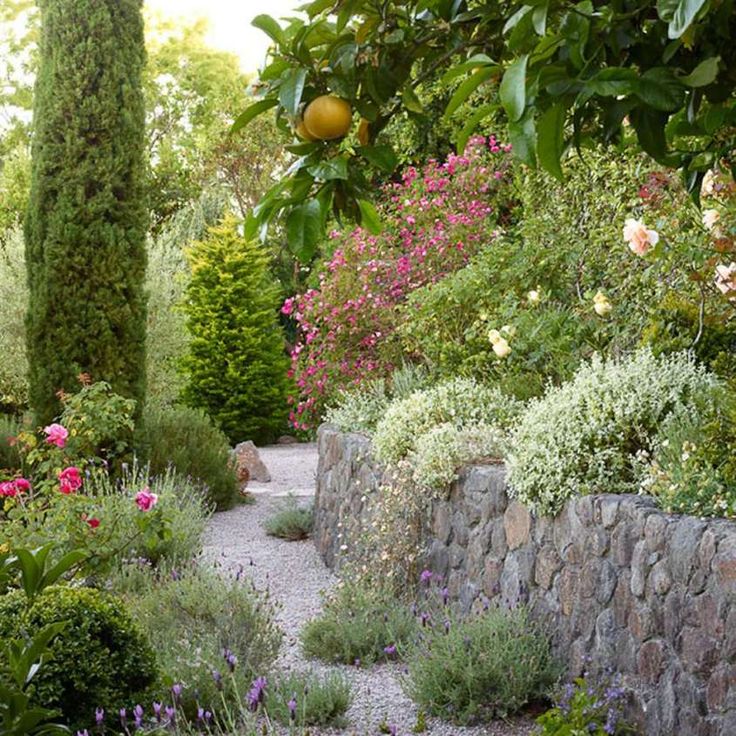
- Cold-resistant grasses help recreate a dry summer landscape when the riot of southern flowers subsides. Sandy grate (Elymus arenarius) with narrow bluish-gray leaves, up to a meter high, looks especially elegant, planted with curtains. The only negative is that it is very aggressive, it is better to plant it immediately with a limiter. Gray fescue (Festuca glauca) forms low bushes of a bluish-steel color. Sheep evergreen (Helictotrichon sempervirens), up to 50 cm high, its variety "Saphirsprudel" with bright gray-blue leaves blooms with a fountain of shiny silver spikelets.
- Spicy-aromatic plants are an indispensable attribute of Mediterranean gardens. Cushions of thyme (Thymus) grow beautifully, there are varieties with almost white flowers and bright purple. Lavender angustifolia (Lavandula angustifolia) is a typical southern plant, but it winters well on sunny slopes where there is no stagnant water. Basil (Ocimum), hyssop (Hyssopus), catnip (Nepeta), sage (Salvia), monarda (Monarda) are also very fragrant and unpretentious.

Learn more



